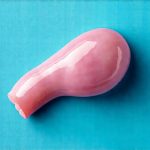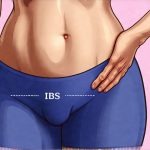Pelvic irritation is an incredibly common experience, yet it’s often shrouded in silence and misunderstanding. Many individuals navigate debilitating discomfort – ranging from persistent ache to sharp, stabbing pain – that significantly impacts their daily lives. It’s crucial to understand that ‘pelvic irritation’ isn’t a diagnosis itself; it’s a symptom that can stem from numerous underlying causes, including conditions like interstitial cystitis (IC), endometriosis, irritable bowel syndrome (IBS), pelvic floor dysfunction, or even simply heightened nerve sensitivity. Because of this complexity, finding relief often requires a multifaceted approach, and nutrition plays a surprisingly significant role – not as a cure-all, but as a supportive component in managing symptoms and promoting overall well-being.
The goal isn’t about restrictive dieting or eliminating entire food groups; it’s about adopting a “low-stress” nutritional philosophy that minimizes potential irritants while nourishing the body with gentle, easily digestible foods. This means focusing on what you can eat, rather than dwelling on what you need to avoid, and prioritizing consistency over perfection. It’s also important to recognize that everyone is different; what triggers one person’s irritation may not affect another. Therefore, a personalized approach—often involving careful observation of your body’s response to various foods—is essential for long-term success. This article will explore some foundational nutritional principles and strategies to help you navigate days when pelvic irritation flares up.
Gentle Digestion & Reducing Inflammation
A cornerstone of low-stress nutrition for pelvic irritation is prioritizing gentle digestion. When the digestive system is working hard, it can place additional stress on the entire body, potentially exacerbating pelvic pain or discomfort. This is especially true if there’s a connection between gut health and your specific condition (as is often the case with IBS or IC). Focusing on foods that are easily broken down and absorbed minimizes this burden. – Foods like well-cooked vegetables, soft fruits (avoiding highly acidic options initially), lean proteins, and whole grains prepared in simple ways are generally well-tolerated. – Conversely, highly processed foods, excessive amounts of fiber (especially insoluble fiber which can be irritating), greasy or fried foods, and large meals should be limited, as they demand more digestive effort.
Inflammation is often a key factor in pelvic irritation. While acute inflammation is a natural part of healing, chronic low-grade inflammation can contribute to ongoing discomfort. Nutritional choices play a significant role here. – Incorporating anti-inflammatory foods into your diet can help modulate the inflammatory response. This includes fatty fish rich in omega-3s (salmon, mackerel, sardines), berries, leafy green vegetables, and spices like turmeric and ginger. If you’re looking for more ways to support prostate health through dietary choices, explore daily nutrition habits for calm prostate function. – Reducing intake of pro-inflammatory foods such as refined sugars, processed meats, and excessive amounts of saturated fats is also beneficial. Remember that inflammation isn’t always about avoiding a single food; it’s often about the overall dietary pattern.
Hydration is another crucial aspect of gentle digestion. Water helps keep things moving smoothly through the digestive tract and prevents constipation, which can contribute to pelvic pressure and discomfort. Aim for at least eight glasses of water per day, but adjust based on your individual needs and activity level. Herbal teas (like chamomile or ginger) can also be hydrating and soothing – just ensure they don’t contain any irritating ingredients.
Identifying Personal Triggers
One of the most powerful steps you can take is to identify your personal food triggers. This requires mindful attention and a bit of detective work, but it’s incredibly valuable for long-term symptom management. – Start by keeping a detailed food diary, recording everything you eat and drink, along with any associated symptoms (pain level, bloating, urgency, etc.). Be specific about when the symptoms occur in relation to eating. – Look for patterns: Are there certain foods or food groups that consistently seem to worsen your symptoms? Common culprits include caffeine, alcohol, citrus fruits, tomatoes, spicy foods, artificial sweeteners, and carbonated beverages.
The elimination diet is a useful tool but should be approached with caution and ideally under the guidance of a healthcare professional. It involves temporarily removing suspected trigger foods from your diet for a period (typically 2-4 weeks) and then reintroducing them one at a time to observe any reactions. This process allows you to pinpoint specific sensitivities, but it’s important to do it systematically to avoid overwhelming your system or missing key information. – Introduce only one food at a time, in a small quantity, and monitor for symptoms over several days before introducing another food. – If a food triggers symptoms, remove it from your diet again.
It’s vital not to get discouraged if you find that many foods seem to trigger your irritation. This doesn’t mean you have to live on a severely restricted diet; it simply means you need to be more mindful of what you consume and prioritize foods that are well-tolerated. Remember, this is about finding balance and making informed choices based on your individual needs.
The Role of Gut Health
The gut microbiome – the trillions of bacteria living in your digestive tract – plays a surprisingly significant role in pelvic health. An imbalance in the gut microbiome (dysbiosis) can contribute to inflammation, increased intestinal permeability (“leaky gut”), and altered nerve sensitivity, all of which can exacerbate pelvic irritation. – Supporting a healthy gut microbiome through diet is crucial. This means consuming probiotic-rich foods like yogurt (if tolerated), kefir, sauerkraut, kimchi, and kombucha. – Prebiotics—foods that feed the beneficial bacteria in your gut—are also important; these include garlic, onions, bananas, asparagus, and oats.
Consider incorporating fermented foods gradually to avoid digestive upset. Start with small amounts and monitor for any changes in symptoms. If you have a history of SIBO (Small Intestinal Bacterial Overgrowth), introducing probiotics might not be appropriate without professional guidance. – A diet rich in fiber (from well-cooked sources) can also promote gut health, but again, be mindful of your individual tolerance levels.
The connection between the gut and the brain (“gut-brain axis”) is particularly relevant to pelvic pain. Stress can significantly impact the gut microbiome, leading to increased inflammation and altered bowel function. Conversely, a healthy gut microbiome can help regulate mood and reduce stress levels. Therefore, managing stress alongside dietary changes is essential for optimal pelvic health. To further manage stress and its impacts, consider incorporating stress reduction techniques for pelvic muscle relaxation.
Mindful Eating & Symptom Tracking
Beyond what you eat, how you eat also matters significantly. Rushing through meals, eating while distracted, or consuming large portions can all contribute to digestive distress and exacerbate pelvic irritation. – Practice mindful eating: Sit down in a relaxed environment, savor each bite, and pay attention to your body’s signals of fullness. – Avoid eating when stressed or emotional, as this can disrupt digestion.
Symptom tracking is an ongoing process. Don’t abandon your food diary even after you’ve identified some initial triggers. – Continue recording your meals and symptoms to identify any new patterns or changes in tolerance levels. – Be patient with yourself; it takes time to understand your body’s responses to different foods.
Remember that nutrition is just one piece of the puzzle when managing pelvic irritation. It’s important to work with a healthcare team – including doctors, physical therapists, and registered dietitians – to develop a comprehensive treatment plan tailored to your specific needs and underlying condition. This article provides general guidance; it’s not intended as medical advice. Always consult with a qualified healthcare professional before making any significant changes to your diet or treatment plan. For a more holistic approach, explore comfort-first eating strategies for pelvic sensitivity and consider how they integrate with your dietary adjustments.





















